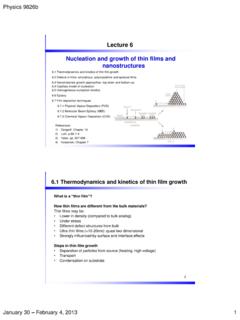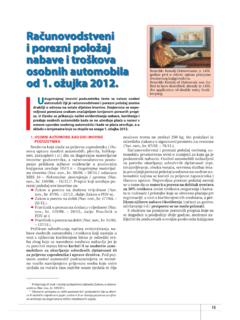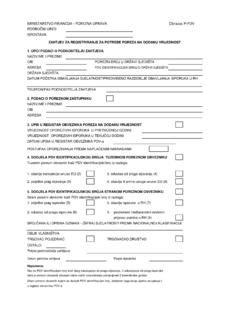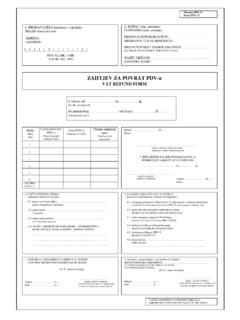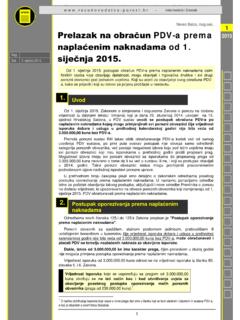Transcription of Lecture 1 Thermodynamics of Surfaces; Equilibrium …
1 Lecture 1. Thermodynamics of surfaces ;. Equilibrium Crystal Shape Course will primarily focus on: atomic structure and electronic properties, chemical composition and adsorption properties of surfaces But . Many important aspects of surface properties can be understood from the point of view of macroscopic Thermodynamics - the surface under Equilibrium conditions ( , faceting, wetting, island growth). References: 1) Zangwill, Chapter 1. 2) Somorjai, Chapter 3. 3) Lecture 1 1. Surface Thermodynamic Functions Thermodynamics (Gibbs): In Equilibrium , a one-component system is characterized completely by the internal energy, U. U U ( S ,V , N ). U U U. dU dS dV dN. S V ,N V S ,N N V ,S. dU TdS PdV dN ( ). Two types of parameters: - Extensive parameters U, V, S, N, A (can be summed to give entire system value). - Intensive parameters T, P, i (thermodynamic driving parameters that do not add). Lecture 1 2. 1. Surface Thermodynamic Functions Now, suppose a crystalline solid bounded by surfaces Total Energy U NU O AU S excess energy due to unit area for surface # of atoms surface in solid area Similarly: Total Entropy S NSO AS S.
2 Gibbs free energy (per unit area) G S H S TS S. Total free energy: G NG o AG S. Surface thermodynamic values defined as excesses over the bulk values : Importance of Gibbs free energy: at Equilibrium surface reactions, phase changes occur at constant T, P, where G = const dG = 0. Lecture 1 3. Surface Tension and Surface Energy In 3D system to create a volume: W = P dV. Similarly, to create a surface: WST,P = dA. is 2D analog of pressure: surface tension , for 2D liquid film, infinite work done to create additional surface area dA: Units of : eV/surface atom erg/cm2 Joules/m2 W =F dx= ldx dynes/cm Newtons /m Note: work of crystal cleavage proportional to dA. Lecture 1 4. 2. Thermodynamics of surfaces U U U U. dU dS dV dN A d i , j . S V N V. V ,N , A S ,N , A S ,V , A S ,V , N. i, j TdS PdV dN A s i , j d i , j ( ) si,j and i,j surf. stress and i, j strain tensors is independent of small strains only for liquids More generally we must consider the expression (cf.)
3 Zangwill, ): d . i s ij ij . d ij T. j For liquid or solid under small strain: s = . W S. In solids it is convenient to denote as i, or (n ) lim ( A 0). A. Note: = GS specific free surface energy of one component system is always positive! Lecture 1 5. Order of magnitude estimates of . Covalent bonded system: diamond the simplest case of bond breaking C C bond strength ~ eV/bond (bond strength in C2H6). Energy = 2 A. From crystallography: x 1015 bonds/cm2 for (111) surface = total bond energy Lecture 1 6. 3. Order of magnitude estimates of . ZS Broken surface bonds For metals: Ecoh N S # atoms/cm2. Z nearest neighbor bonds Surface tension of selected solids and liquids Consider Cu(111) one surface atom: Z = 12 (bulk), ZS = 3 (surface). Lecture 1 7. Order of magnitude estimates of . Surface tension can be regarded as an excess free energy/unit area Relationship between surface and cohesive energy of metals (cf. , Metal Surf. Electron Physics, ). changes of surface tension across the periodic table reflect the variations in Ecoh 4 rWigner 2.
4 Seitz Ecoh Lecture 1 8. 4. Curves surfaces For a bubble, surface tension counteracts internal pressure Pext 2 . Pint Pext Pint r For curved surface of a solid, vapor pressure Pr, depends on r . Flat surface: r = , P = PO. Curved surface: P 2 Vin ( specific). ln r . PO RT r Kelvin equation: Pr . exp K important for r 1000 . PO r . Applied to important surface problems: melting point, nucleation and growth ( , ripening : t=0 t= . For distribution of particles on surface, little Lecture 1 ones disappear, large one grow 9. Contact Angle Measurements of for liquid: dmax shape of drop determined by combination of and g (gravity). Contact angle L, S surface free energy of liquid (solid). SL interface energy or tension Surface tension exerts force along surface at line of intersection At Equilibrium : L cos a = S SL (Young's eq.) SL. cos a S. L. Complete wetting Wetting No wetting S > ( L + SL) L < ( Lecture S + SL1) < L SL > ( L + S) 10. 5. Need to include structural information.)
5 The surface energy or the surface tension of a planar solid surface depends on the crystallographic orientation of the sample Bulk energy < surface energy < step energy < kink or adatom energy from Somorjai Chemistry in two dimensions: surfaces . Lecture 1 11. Anisotropy of surface free energy, . Following Zangwill ( ) consider stepped or (vicinal) surface of 2D solid: a Starting from plane, addition of each step adds energy a n a Define b energy per step a 1. tan a ~ steps 1 tan a a na n . unit _ cell na a a b a 0 a a (a) has discontinuous derivative at a = 0 there is a cusp (a). A cusp exists at every direction corresponding to a rational Miller index ( , low index plane, for example: (100), (111), (110). a 0 a Lecture 1 12. 6. Anisotropy of the -plot Zangwill, Lecture 1 13. Equilibrium Crystal Shape (ECS).. Crystal will seek a shape determinedby (n)da minimumat V const. Sphere for liquid, faceted for solids: determine shape from Wulff's theorem Wullf's Theorem: for a crystal at Equilibrium , there exists a point in the interior such that its perpendicular distance h i from the ith face is proportional to i h1 1.)
6 H2 2 1 2.. h1 h2. Procedure: 1. given (n), draw a set of vectors from a common origin with length hi proportional to i, and with directions normal to plane in question 2. construct planes perpendicular to each vector 3. find the geometric figure having the smallest size with non-intersecting planes 4. this is the ECS (in practice - in 3D) Lecture 1 14. 7. Equilibrium Crystal Shape (ECS). In Equilibrium , shape of a given amount of crystal minimizes the total surface energy For Liquids: spherical shape For Solids: Equilibrium Crystal Shape (ECS) has facets Dependence of ECS on degree of anisotropy: / < 1% ~nearly spherical ~ 2% - 10%: flats connected by curves ~ 10% - 20%: polyhedra with rounded > 30% polyhedra flats only Lecture 1 15. Example of ECS for a 2D crystal dl minimum for constant area From (n) we can determine ECS. From ECS can determine relative values of (n). Suppose - plot has only two types of cusps: (10) and (11). Lecture 1 16. 8. Free-energy change vs radius of nucleus 4 r 3.
7 Gtotal 4 r 2 . 3 . Gtotal total free-energy change r radius of embryo or nucleus volume free energy - specific surface free energy Two components: (i) volume free- energy change ( GV or ) and (ii). surface free-energy change ( GS). S L 0;. S L. r* - critical radius (i) is negative, -if r < r*, droplet can shrink or dissolve -if r > r*, droplet grows (ii) GS is positive Lecture 1 17. Consequences for planar surfaces There is a tendency for stepped (vicinal) surface to form facets by step bunching a Driving force minimize edge energy a n a 2n a 2a Double step O/Ir(210) Ir{311} and Ir (110) facets Impurity-induced faceting: adsorb impurities (oxygen, metallic films). bcc W(111) Pt/W{011} and {112}. , , , Surf. Sci. Lecture 1 18. 438 (1999)191-206. 9. Temperature Dependence of and ECS. n T . In general o 1 for metals n ~ 1 TC roughening temperature TC . ECS: T1 = 0 T2 > T1 T3 > T2 T3 > TC Tmelt T = 0K. meandering steps above TC. Disappearing of a cusp in the.
8 Plot with increasing T. Lecture 1 19. Terrace Ledge - Kink (TLK) Model also Solid on Solid (SOS) Model Typical surface sites and defects on a simple cubic (100) surface (6 in bulk). From Somorjai To form vacancy in terrace and move atom to kink, break 5 bonds, remake 3. GV WK WT. NV GV . exp . N surf kT . At high T, get surface roughening as vacancies interact Lecture 1 20. 10. Consequences of being positive ECS. surfaces easily covered by adsorbates, which lower surface energy Alloys: component with lower segregates Adhesion best for high . Self-healing of organic layers Lecture 1 21. Summary is always positive Order of magnitude for . What defines Equilibrium Crystal Shape (ECS). Temperature Dependence of and ECS. Terrace Ledge - Kink (TLK) Model Lecture 1 22. 11.




